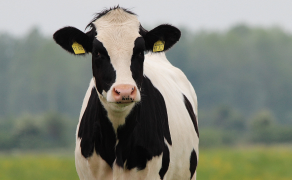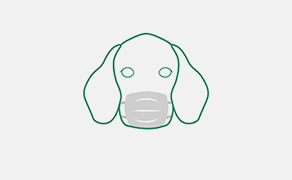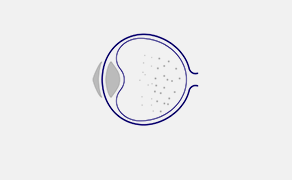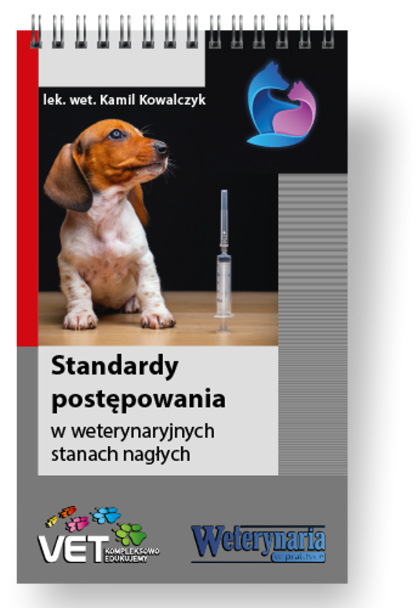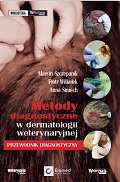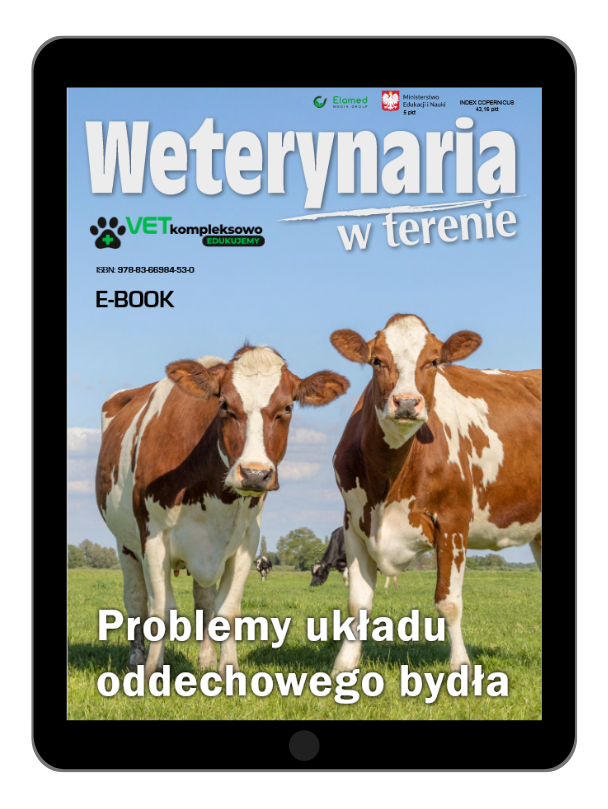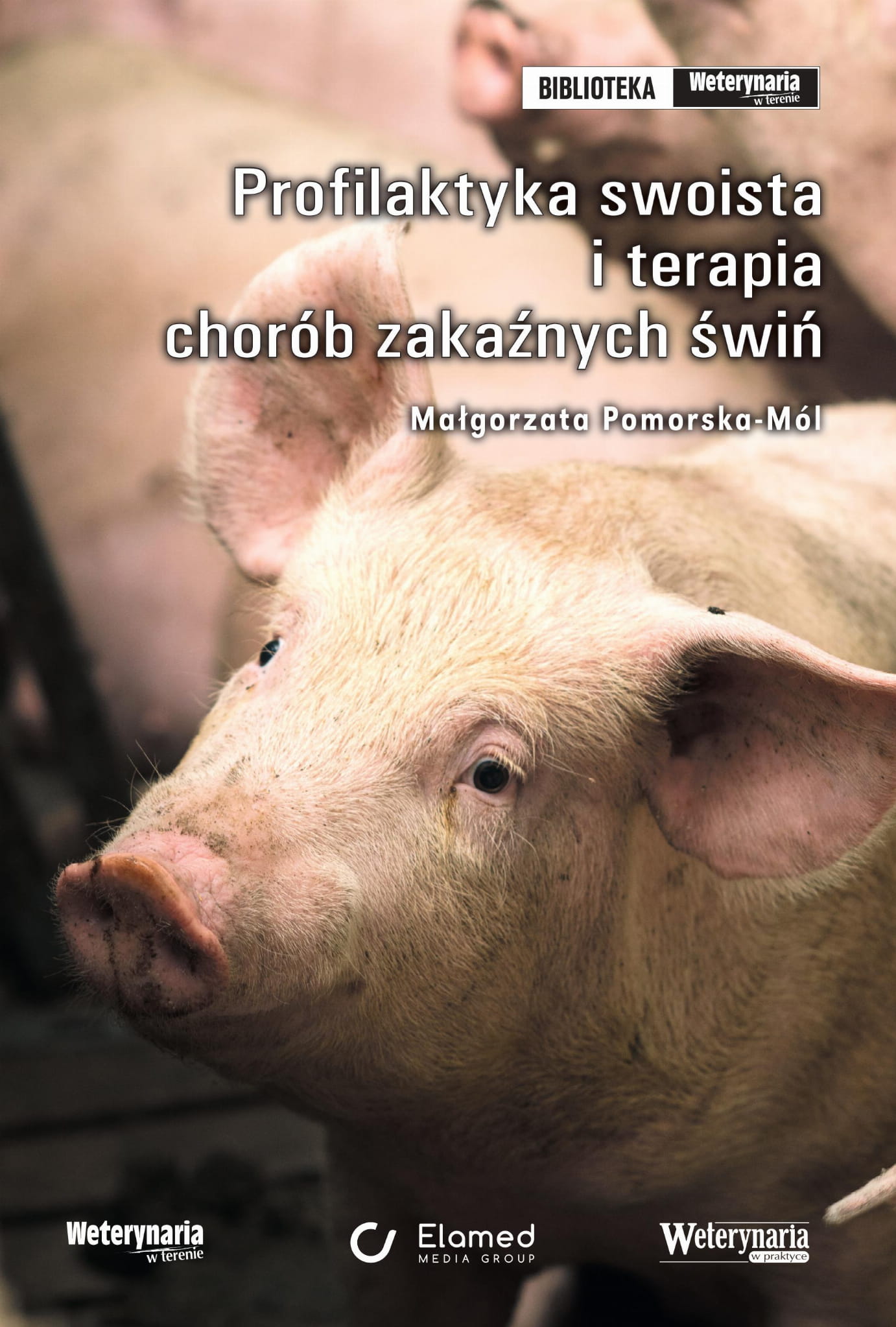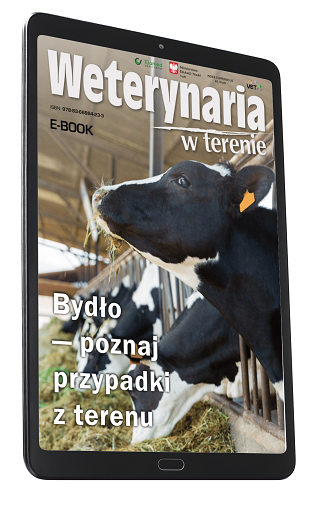Hemofilia typu A i B u psów
Piśmiennictwo / References
- Ahmad, S. S., Rawala-Sheikh R., Walsh P.N.: Comparative interactions of factor ix and factor ixa with human platelets. “J. Biol. Chem.”, 1989, 264, 6, 3244-3251.
- Ahmad S. S., Scandura J. M., Walsh N.: Structural and functional characterization of platelet receptor-mediated factor viii binding. “J. Biol. Chem.”, 2000, 275, 17, 13071-1381.
- Ahmad S. S., London F. S., Walsh N.: The assembly of the factor x-activating complex on activated human platelets. “J. Biol. Chem.”, 2003a, 1, 1, 48-59.
- Ahmad S. S., London F. S., Walsh N.: Binding studies of the enzyme (factor ixa) with the cofactor (factor viiia) in the assembly of factor-x activating complex on the activated platelet surface. “J. Thromb. Haemost.”, 2003b, 1, 11, 2348-2355.
- Alcaraz P., Kehl A., Mueller E. (2013): FVIII gene mutations responsible for canine haemophilia a. 21th annual meeting of the innlab dvg 2013. Munich, 01.02.13.-02.02.2013.
- Axelrod J. H., Read M. S., Brinkhous K. M.: Phenotypic correction of FIX deficiency in skin fibroblasts of hemophilic dog. “Proc. Natl. Acad. Sci.”, 1990, 87, 13, 5173-5177.
- Benn D. M., Gentry P. A., Johnstone I.B.: Classic hemophilia (hemophilia A) in a family of collies. “Can. Vet. J.”, 1978, 19, 8, 221-225.
- Blostein M. D., Furie B. C., Rajotte I.: The Gla domain of factor IXa binds to factor VIIIa in the tenase complex. “J. Biol. Chem.”, 2003, 278, 33, 31297-31302.
- Bowen, D. J.: Haemophilia A and haemophilia B: molecular insights. “Mol. Path.”, 2002, 55, 1-18.
- Brooks M. B., Gu W., Ray K.: Complete deletion of factor IX gene and inhibition of factor IX activity in a labrador retriever with hemophilia B. “J. Am. Vet. Med. Assoc.”, 1997, 211, 11, 1418-1421
- Brooks M.: A Review of Canine Inherited Bleeding. Disorders: Biochemical and Molecular. Strategies for Disease characterization and Carrier Detection. “J. Hered.”, 1999, 90, 112-118.
- Brooks M. B., Gu W., Barnas J. L.: A Line 1 insertion in the Factor IX gene segregates with mild hemophilia B in dogs. “Mamm. Genome”, 2003, 14, 11, 788-795.
- Cameron C., Notley C., Hoyle S.: The canine factor VIII cDNA and 5’ flanking sequence. “J. Thromb. Haemost.”, 1998, 79, 2, 317-322.
- Campbell K. L., Greene C. E., Dodds W.J.: Factor IX deficiency (hemophilia B) in a Scottish terrier. “J. Am. Vet. Med. Assoc.”, 1983, 182, 2, 170-171.
- Denis C. V., Wagner D. D.: Insights from von Willebrand disease animal models. “Cell. Mol. Life. Sci.”, 1999, 56, 11-12, 977-990.
- Dunning M. D., Averis G. F., Pattinson H.: Haemophilia A (factor VIII deficiency) in a litter of Weimaraners. “J. Small. Anim. Pract.”, 2009, 50, 7, 357-359.
- Esmon C.T., Lollar P.: Involvement of thrombin anion-binding exosites 1 and 2 in the activation of factor V and factor VIII. “J. Biol. Chem.”, 1996, 271, 23, 13882-13887.
- Evans J. P., Brinkhous K. M., Brayer G.D.: Canine hemophilia B resulting from a point mutation with unusual consequences. “Proc. Natl. Acad. Sci.”, 1989A, 86, 24, 10095-10099.
- Fay P. J.: Activation of factor VIII and mechanisms of cofactor action. “Blood Rev.”, 2004, 18, 1, 1-15.
- Fay P. J.: Factor VIII Structure and Function. “Int. J. Hematol.”, 2005, 83, 2, 103-108
- Feldman D. G., Brooks M. B., Dodds W. J.: Hemophilia B (factor IX deficiency) in a family of German shepherd dogs. “J. Am. Vet. Med. Assoc.”, 1995, 206, 12, 1901-1905.
- Gailani D.: Activation of factor IX by factor XIa. “Trends. Cardiovasc. Med.”, 2000, 10, 5, 198-204.
- Gentry P. A., Johnstone I. B., Sanford S. E.: Diagnosis of classic hemophilia (hemophilia A) in a standard poodle. “Can. Vet. J.”, 1977, 18, 3, 79-81.
- Gu W., Brooks M., Catalfamo J.: Two distinct mutations cause severe hemophilia B in two unrelated canine pedigrees. “J. Thromb. Haemost.”, 1999, 82, 4, 1270-1275.
- Hough C., Kamisue S., CameronC.: Aberrant splicing and premature termination of transcription of the FVIII gene as a cause of severe canine hemophilia A: similarities with the intron 22 inversion mutation in human hemophilia. “J. Thromb. Haemost.”, 2002, 87, 4, 659-665.
- Iazbik P. M., Silva R. M., Marquez S. A.: Hemophilia A in a Yorkshire Terrier family. „Av. Cienc. Vet.”, 1997, 12, 1, 57-60.
- Johnstone I. B., Norris A. M.: A moderately severe expression of classical hemophilia in a family of german shepherd dogs. “Can. Vet. J.”, 1984, 25, 5, 191-194.
- Lacobelli N.: Variant Canine Coagulation Factor IX as a Novel Approach to the Treatment of Hemophilia B. “PennScience”, 2008, 6, 2, 27-32.
- Lacroix-Desmazes S., Navarrete A. M., Andre S.: Dynamics of factor VIII interactions determine its immunologic fate in hemophilia A. “Blood”, 2008, 112, 2, 240-249.
- Lane D. A., Philippou H., Huntington J.A.: Directing thrombin. “Blood”, 2005, 106, 8, 2605-2612.
- Lawson J. H., Mann K. G.: Cooperative activation of human factor IX by the human extrinsic pathway of blood coagulation. “J. Biol. Chem.”, 1991, 266, 17, 11317-11327.
- Lozier J. N.,Dutra A., Pak E.: The Chapel Hill hemophilia A dog colony exhibits a factor VIII gene inversion. “Proc. Natl. Acad. Sci. USA.”, 2002, 99, 20, 12991-12996.
- Mann K. G., Butenas S., Brummel K.: The Dynamics of Thrombin Formation. Arterioscler. “Thromb. Vasc. Biol.”, 2003, 23, 1, 17-25.
- Mathur A., Zhong D., Sabharwal A. K.: Interaction of factor IXa with factor VIIIa. Effects of protease domain Ca2+ binding site, proteolysis in the autolysis loop, phospholipid, and factor X. “J. Biol. Chem.”, 1997, 272, 37, 23418-23426.
- Mauser A. Whitlark E. J., Whitney K. M.: A deletion mutation causes hemophilia B in Lhasa Apso dogs. “Blood”, 1996, 88, 9, 3451-3455.
- Mischke R., Wilhelm C., Czwalinna A.: Canine haemophilia A caused by a mutation leading to a stop codon. “Vet. Rec.”, 2011, 169, 19, 496b.
- Mischke R., Kehl A., Kuehnlein P.: Genetic analysis of haemophilic Havanese dogs. Conference Proceedings of the 13th Conference of the ESVCP/ECVCP 2011, Dublin, 31.08.-03.09.2011 c.S.30.
- Mischke R., Kühnlein P., Kehl A.: G244E in the canine factor IX gene leads to severe haemophilia B in Rhodesian Ridgebacks. “Vet. J.“, 2011, 187, 1, 113-118.
- Mischke R.: Hämophilia A und B beim Hund. „Tierärzl. Prax. Kleintiere”, 2012, 40, K, 44-53.
- Monroe D. M., Key N. S.: The tissue factor-factor VIIa complex: procoagulant activity, regulation, and multitasking. “J. Thromb. Haemost.”, 2007, 5, 6, 1097-1105.
- Nakata M., Sakai M., Sakai T.: Hemophilia B in a crossbred Maltese dog. “J. Vet. Med. Sci.”, 2006, 68, 11, 1223-1224.
- Nichols T. C., Bellinger D. A., Reddick R. L.: The roles of von Willebrand factor and factor VIII in arterial thrombosis: studies in canine von Willebrand disease and hemophilia A. “Blood”, 1993, 81, 10, 2644-2651.
- Osterud B., Rapaport S. I.: Activation of factor IX by the reaction product of tissue factor and factor VII: additional pathway for initiating blood coagulation. “Poc. Natl. Acad. Sci. USA”, 1977, 74, 12, 5260-5264.
- Peterson M. E., Dodds W. J.: Factor IX deficiency in an Alaskan Malamute. “J. Am. Vet. Med. Assoc.”, 1979, 174, 12, 1326-1327.
- Sadler J. E.: Biochemistry and genetics of von Willebrand factor. “Annu. Rev. Biochem.”, 1998, 67, 1, 395-424.
- Scandura J. M., Ahmad S. S., Walsh P. N.: A binding site expressed on the surface of activated human platelets is shared by factor X and prothrombin. “Biochemistry”, 1996, 35, 27, 8890-8902
- Sherding R. G., Dibartola S. P.: Hemophilia B (factor IX deficiency) in an Old English Sheepdog. “J. Am. Vet. Med. Assoc.”, 1980, 176, 2, 141-142.
- Stokol T.: Disorders of hemostasis. [W:] Manual of canine and feline Clinical Pathology. “Br. Small Anim. Vet.”, 2005, Gloucester, England, 83-98.
- Sugahara Y., Catalfamo J., Brooks M.: Isolation and characterization of canine factor IX. “J. Thromb. Haemost.”, 1996, 75, 3, 450-455.
- Turecek P. L., Gritsch H., Pichler L.: In vivo charaterization of recombinant von Willebrand factor in dogs with von Willebrand disease. “Blood”, 1997, 90, 9, 3555-3567.
- Van Dieijen D., Tang G., Rosing J.: The role of phospholipid and factor VIIIa in the activation of bovine factor X. “J. Biol. Chem.”, 1981, 256, 7, 3433-3442.
- Verlander J. W., Gorman N. T., Dodds W. J.: Factor IX deficiency (hemophilia B) in a litter of Labrador retrievers. “J. Am. Vet. Med. Assoc.”, 1984, 185, 1, 83-84.
dr. Patricia Alcaraz Rodriguez
LABOKLIN GmbH&Co.KG
Steubenstrasse 4
D-97688, Bad Kissingen
Niemcy
Mogą zainteresować Cię również
Znajdź swoją kategorię
2609 praktycznych artykułów - 324 ekspertów - 22 kategorii tematycznych
Weterynaria w Terenie
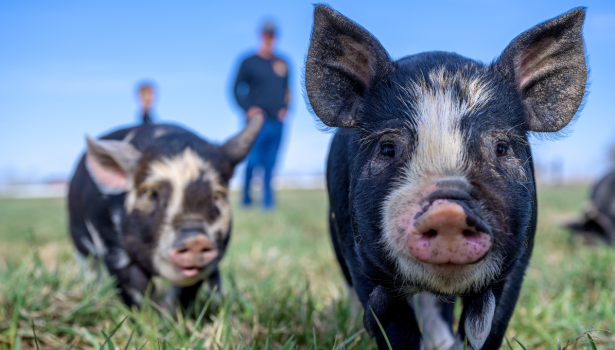
Praktyczne aspekty diagnostyki laboratoryjnej chorób świń
Badania serologiczne Próby diagnostyczne, w których istotnym czynnikiem są przeciwciała swoiste dla czynnika wywołującego chorobę, umożliwiają przede wszystkim jakościową ocenę towarzyszącej zakażeniu odpowiedzi immunologicznej, dostarczając informacje do wnioskowania o przebiegu infekcji. Istnieją dwa rodzaje wyników ilościowych testów serologicznych. Pierwszy, jak seroneutralizacja (SN), wyraża się końcowym rozcieńczeniem lub mianem. W drugim, jak np. test immunoenzymatyczny ELISA, […]
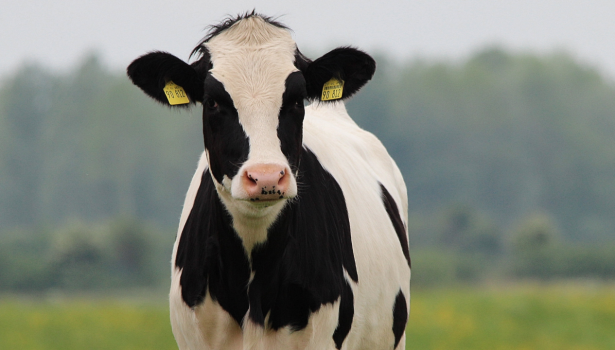
Podkliniczny niedobór wapnia i jego wpływ na wyniki rutynowych badań laboratoryjnych w różnych okresach laktacji u krów mlecznych
Rozpoznawanie choroby Wywiad W rozpoznawaniu pleuropneumonii duże znaczenie ma wywiad epizootiologiczny. Podejrzenie pleuropneumonii powinno być podjęte w przypadku stwierdzenia szybko rozprzestrzeniających się ostrych zachorowań z objawami ze strony układu oddechowego i nagłych padnięć warchlaków i tuczników o dobrej kondycji z objawami chorobowymi ze strony układu oddechowego i wyraźnego zasinienia skóry. Przy postaci chronicznej podejrzenie tej […]

Praktyczne aspekty diagnostyki laboratoryjnej chorób świń
Badania serologiczne Próby diagnostyczne, w których istotnym czynnikiem są przeciwciała swoiste dla czynnika wywołującego chorobę, umożliwiają przede wszystkim jakościową ocenę towarzyszącej zakażeniu odpowiedzi immunologicznej, dostarczając informacje do wnioskowania o przebiegu infekcji. Istnieją dwa rodzaje wyników ilościowych testów serologicznych. Pierwszy, jak seroneutralizacja (SN), wyraża się końcowym rozcieńczeniem lub mianem. W drugim, jak np. test immunoenzymatyczny ELISA, […]
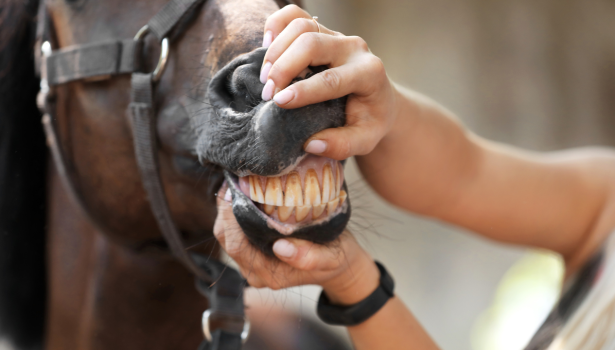
Wprowadzenie do stomatologii koni
Podczas badania klinicznego w pierwszej kolejności obserwujemy całą głowę, zwracając uwagę na jej poszczególne elementy (małżowiny uszne, oczy, kości czaszki, mięśnie, nozdrza), doszukując się w nich braku symetrii. Może być on powodowany deformacją kości czaszki, ich hipertrofią, chorobami neurologicznymi, zanikiem mięśni, obrzękiem tkanek miękkich. Podczas omacywania należy dokładnie sprawdzić okolicę stawu skroniowo-żuchwowego poprzez ucisk (ryc. […]

Wskazówki na wypadek widocznego niepowodzenia terapii antybiotykowej. Kryteria skutecznej terapii oraz kluczowe pytania jako 5 kroków drzewa analitycznego
Czynniki powiązane z użyciem antybiotyku w terapii: Czy wybór antybiotyku opierał się na badaniach klinicznych i dodatkowych (diagnoza, antybiogram)? Sprawdź odpowiedź na pytanie 3. Farmakokinetyka/farmakodynamika wybranego antybiotyku? Koncentracja i czas działania antybiotyku w zakażonej tkance a efektywność w stosunku do czynnika bakteryjnego wywołującego chorobę (spektrum działania antybiotyku, wrażliwość z antybiogramu – odpowiedzi na pytanie 3.). […]
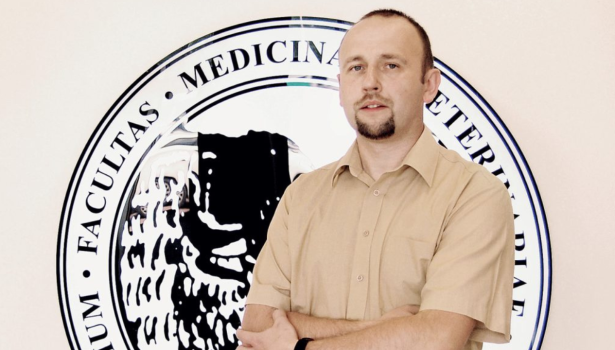
Czarno na białym – mastitis okiem praktyka – rozmowa z dr. n. wet. Sebastianem Smulskim
Rozmowa z dr. n. wet. Sebastianem Smulskim, pracownikiem Uniwersytetu Przyrodniczego w Poznaniu, specjalistą w dziedzinie profilaktyki i leczenia mastitis u krów, który w swoich badaniach zgłębia tematykę zapalenia gruczołu mlekowego u bydła, zarówno w aspekcie naukowym, jak i praktycznym. Większość zapaleń gruczołu mlekowego ma etiologię bakteryjną. Dlaczego, pomimo rozwoju mikrobiologii, medycyny weterynaryjnej i prowadzonych badań, […]

XVIII FORUM ZOOTECHNICZNO-WETERYNARYJNE: NOWE HORYZONTY W ROZRODZIE ZWIERZĄT
Na Uniwersytecie Przyrodniczym w Poznaniu w dniach 18-19 kwietnia br. odbyło się XVIII Forum Zootechniczno-Weterynaryjne pod hasłem „Rozród zwierząt w dobie selekcji genomowej”. To wydarzenie zgromadziło liczne grono lekarzy weterynarii oraz hodowców, by omówić najnowsze osiągnięcia w dziedzinie hodowli i rozrodu zwierząt. Organizacja Forum była wspólnym przedsięwzięciem Poznańskiego Koła Polskiego Towarzystwa Zootechnicznego, Wielkopolskiego Oddziału Polskiego […]



